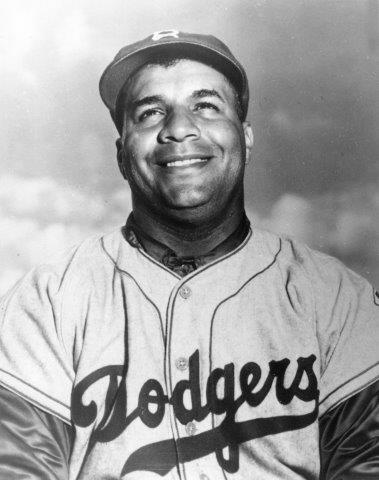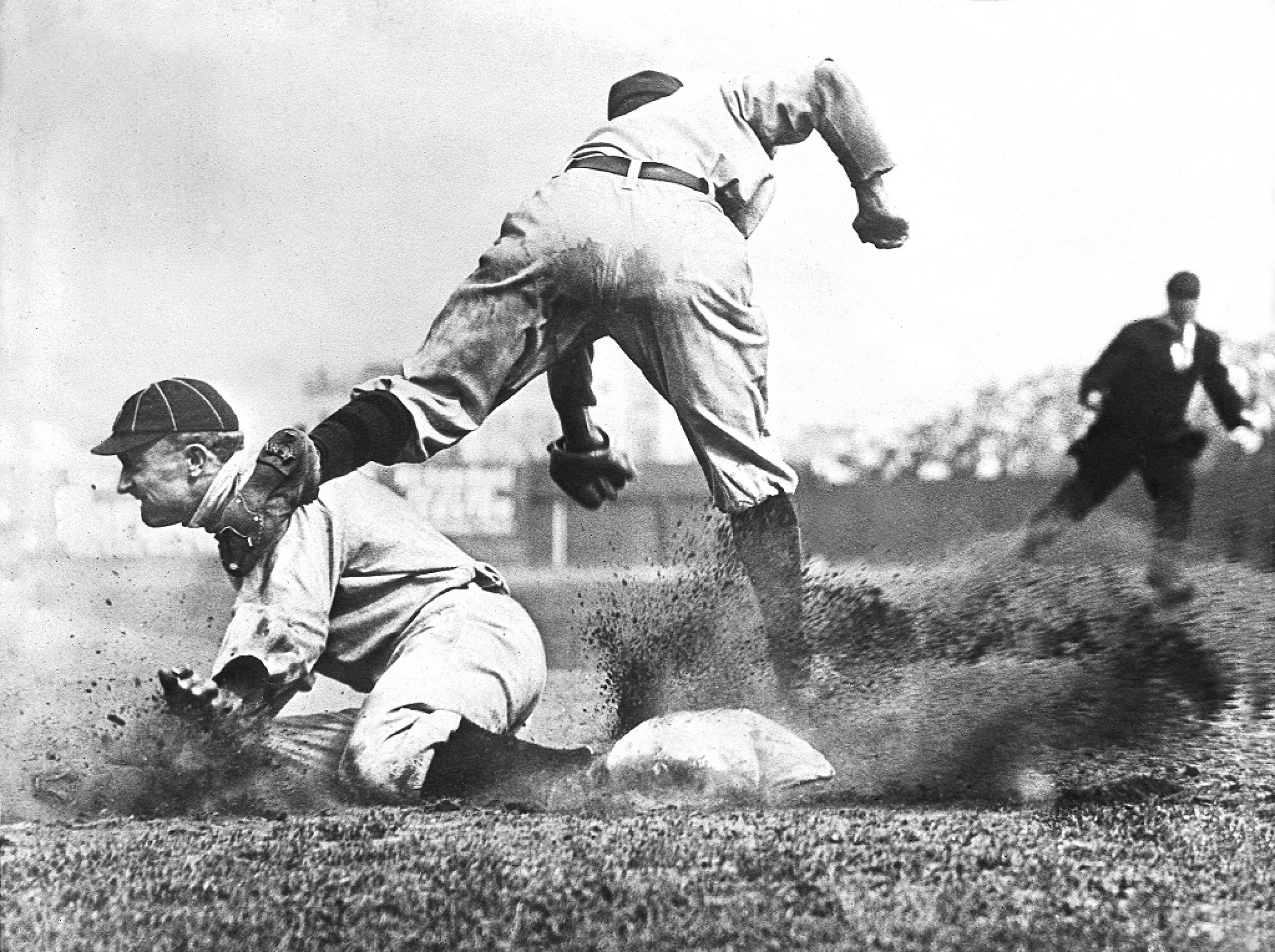Baseball History Comes Alive Now Ranked #2 by Feedspot Among All Internet Baseball History Websites and Blogs!
Guest Submissions from Our Readers Always Welcome!
THE BASEBALL HISTORY COMES ALIVE BLOG
Please note: As we compose new blog entries, we will now send each one out to all our subscribers as we post them. Here’s a link to see the entire Blog Archives -GL
March 1, 2021
The Best Catchers Of All Time – In Terms of Throwing Out Base Stealers
While doing the research about great catchers, one of the interesting stats I uncovered was that Roy Campanella has the highest “caught stealing” percentage in major league history. He caught potential base stealers at an almost unbelievable 57.40% rate.
Just think about that for a minute… How many catchers have there been in major league history? 1,000? 5,000? Whatever the number is, no catcher ever threw out base stealers with a higher degree of efficiency than Campy.
OK…I know a lot of that success for any catcher has to do with his pitching staff’s ability to keep running off-balance. But this is still an important, often over-looked statistic. To be successful in this category, you still have to have a strong, accurate arm.
With a little more research, I discovered there have been only 15 catchers in baseball history who have a career caught-stealing percentage of 50% or higher. How many of these Top-15 catchers with caught-stealing percentages at 50% or higher do you think you can name? Here’s a couple hints: Of the top 15, four are in the Hall of Fame. Number two is Gabby Hartnett, with a percentage just slightly below Campy’s at 56.11%. Here’s the list:
1. Roy Campanella (57.40%); 2. Gabby Hartnett (56.11%); 3. Buddy Rosar (54.81); 4. Al Lopez (54.05%); 5. Mickey O’Neil (53.09%), 6. Hank Gowdy (52.53%); 7. Ray Meuller (51.91%); 8. Sam Agnew (51.69%); 9. Ray Schalk (51.59%); 10. Jimmy Archer (52. 35%); 11. Patsy Gharrity (50.99%); 12. Gus Mancuso (50.69%); 13. Paul Richards (50.35%); 14. Clyde Klutz (50.31%); 15. Mickey Owen (50.29%).
I also found a list of the Top-200 catchers listed by caught-stealing percentage. Again, considering the number of catchers in history, anyone who makes the Top-200 must be pretty good in my book. Just for the fun of it, I pulled out a few names along with their position on the Top-200 list. Some of these just might surprise you:
#32: Yogi Berra (48.61%); #48: Ernie Lombardi (47.65%); #65: Bill Dickey (46.59); #70: Birdie Tebbitts (46.37%); #80: Del Crandall (45.85%); #82: Wally Schang (45.85); #84: Ivan Rodriquez (45.68%); #130: Elston Howard (43.90%); #140: Johnny Bench (43.47%); #189: Yadier Molina (41.20%).
Since I’ll be featuring Campy again soon, I’ll say a few words about the career of #2, the great Hall-of-Famer, Gabby Hartnett.
In the featured photo, we see a great action shot of Gabby Hartnett applying the tag to a high-sliding Dick Bartell trying to complete an inside-the-park home run, September 17, 1932. The umpire is Dolly Stark.
In a 20-year major league career, Hartnett hit .297, with 236 home runs, 1,179 RBIs, a .370 on-base percentage, and .489 slugging average. He caught 100 or more games for a record 12 times, including a record eight seasons in a row. He led the National League in putouts four times and assists and fielding percentage six times, and double plays seven times, including National league records of 163 career double plays and 453 chances without an error (since broken). Until Johnny Bench came along, Hartnett was considered the greatest catcher in the history of the National League.
Gabby Hartnett took part of some of the most memorable events in major league history including Babe Ruth’s Called Shot during the 1932 World Series, and Carl Hubbell’s strike-out performance in the 1934 All-Star Game. His greatest moment career came with one week left in the 1938 season, when he hit a game-winning home run in the bottom of the ninth inning to put the Cubs into first place. The event, which occurred as darkness descended onto Wrigley Field, became immortalized as the Homer in the Gloamin’.
Gary Livacari


Wow. Surprised that Bench is so far down that list. Could it be that many runners just didn’t try to steal on him in the first place? Also, I didn’t think Campy played in an era of high base stealing, but he must have been pretty good at nailing the guys who did run on him.
Thanks Dave. I think you’re absolutely right and I think you raise a good point. Guys probably didn’t run on Bench unless they were absolutely sure they’d make it. So I guess we have to take the stats in the article with a grain of salt. There’s a lot more to catchers’ stats than meets the eye at first.
Gary,
Thought of Bench and Molina. Also figured Johnny would have been higher. Good point on that.
Campy was fine all around defensively.
When Berra came up in ’46, he had a terrible arm. Once hit the pitcher in the stomach trying to throw out a base runner. Clearly, he got better.
Surprised Ernie Lombardi was so high. One of the slowest runners in history. Could really pound the pill, but was once thrown out from left field on a line drive “base hit!”
The Giants’ Wes Westrum was excellent behind the plate. And blocked home plate like no other.
What I find interesting, Gary, is that most of the catchers on the list are from the older days. Don’t believe they ran as much in the 30s and 40s as they did in the dead ball era and began again in the 50s on up. Probably not as many great base stealers during those two decades. Also wonder if the pitchers then knew how to hold runners on better than those in more modern times. Then again, guys like Maury Wills, Tim Raines, Vince Coleman and Rickey Henderson weren’t easy to throw out. Very interesting statistic.
The numbers tend to refute the assertion that runners were less likely to run on Johnny Bench than Roy Campanella. Johnny caught 1,742 games and 610 steals and 469 caught stealing for a total of 1,070 attempts or .62 per game. Roy played 1,183 games as catcher and had 187 steals and 252 caught stealing for 439 attempts or .37 per game.
Roy Campanella was just that good.
Good points, thanks. That’s probably the best explanation…Campy was just that good.
I have heard that Roy Campanella did not have to stand up in order to throw out a base stealer. He could do it from a catcher’s crouch. Is this true?
Hi Lionel…thanks for checking in! Can’t say I’ve ever heard that about Roy. One guy I remember who used to do that was Manny Sanguillen of the Pirates. Maybe Bench, too.